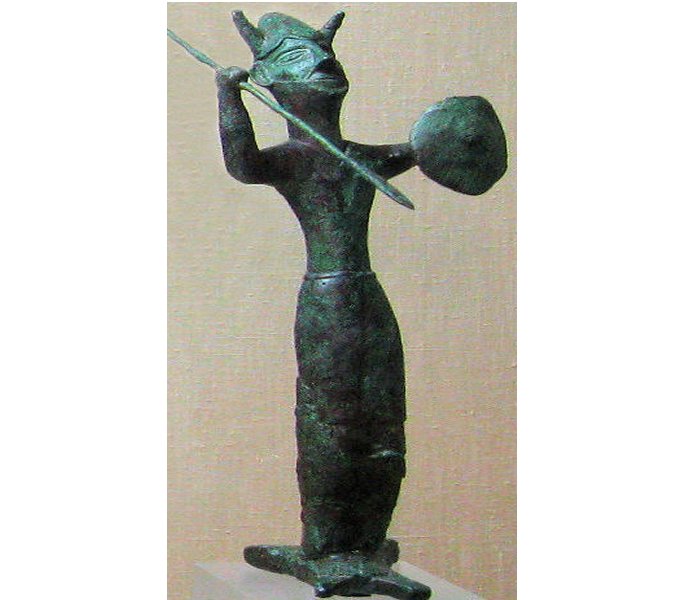Old Kingdom Of Alashiya And City Of Enkomi With Roots On The Island Of Cyprus
A. Sutherland - AncientPages.com - Ancient city of Enkomi flourished in the Late Bronze Age and was possibly the capital of Alashiya (Alasia), a Late Bronze Age country and kingdom located in the eastern part of the Mediterranean region, commonly identified with either Cyprus as a whole or the city of Enkomi by itself, located between the Levant and Anatolia.
Bronze statuette of a male figure wearing a conical cap with horns, known as 'The Horned God' (or 'Apollo Cereates). From Enkomi, Late Bronze Age, 1200-1150., Cyprus Museum, Nicosia
The earliest references to Alashiya are in texts from the Hittite capital Hattusa, but also in texts written in Egyptian, Hittite, Akkadian, Mycenean (Linear B), Ugaritic. Also, some of the Amarna Letters deal with copper trade affairs because Alashiya had rich copper resources.
The ancient city of Enkomi - an important trading center for copper, which was smelted at the site - certainly profited from trade with neighboring countries, which delivered silver, ivory, and other luxury goods in return for copper.
Enkomi manufactured finished bronze objects for sale and was the source of unworked copper shaped like an oxide - the form, in which copper was transported - incomplete vessels, the waste left over from the casting process, smelting, and leftovers from smith's tools.
Excavations carried out at various sites have revealed a large-scale metallurgical activity in Enkomi and several other sites in Cyprus increased during the Late Bronze Age (1650-1050 BC).
Also, the correspondence between the pharaoh and the king of Alashiyia took place, which confirmed by several letters inscribed in the cuneiform script in Akkadian on baked clay tablets. These tablets were unearthed in the palace of Akhenaten at Tell el Amarna in Upper Egypt and date from the second quarter of the 14th century BC.
Ancient history records of Alashiya and the city of Enkomi are very rich. In the 14th century, it was an ally of Egypt and an enemy of the Hittites.
During the 13th century BC, Enkomi was inhabited by Greeks, like most of the cities of Cyprus.
Bronze "Ingot God", Enkomi 12th century BC, Cyprus Museum
In about 1200 BC, Enkomi was - together with Greece, the Aegean, Anatolia, and Syria - overrun by the so-called 'Sea People'. (Enkomi was attacked two times by the Sea People who burned the city.)
After an earthquake ca. 1050 BC, the site was abandoned. Most of the ruins surviving to the present day belong to the city, which was rebuilt after the destruction of 1200 BC. This new city had straight streets which cut each other at right angles.
Among noteworthy finds from Enkomi are diverse inscriptions and the so-called "horned god", a bronze statuette dated to the early 12th century BC, depicting a deity wearing a horned helmet.
The most impressive religious structure revealed during the excavations is the Sanctuary of the Horned God. The solid statue of the Horned God (a young man wearing a helmet with two horns) was found in one of the rooms and is 54.2 cm high. The sanctuary consists of a large rectangular hall with an altar and offering table.
Another well-known statue is the "ingot god", a statue wearing a horned conical hat and greaves, armed with shield and spear, and standing on a miniature hide-shaped ingot.
Today Enkomi (once the important Bronze Age city) is a small village near Famagusta in Cyprus. The history of this ancient place dates back several millennia.
Written by – A. Sutherland AncientPages.com Staff Writer
Copyright © AncientPages.com All rights reserved. This material may not be published, broadcast, rewritten or redistributed in whole or part without the express written permission of AncientPages.com
Expand for referencesReferences:
C. Gates, Ancient Cities: The Archaeology of Urban Life in the Ancient Near East
More From Ancient Pages
-
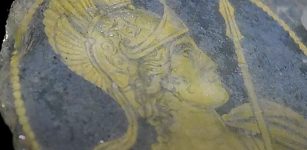 Extremely Rare Ancient Gold Glass With Goddess Roma Found During Subway Works In Rome
Archaeology | Feb 13, 2023
Extremely Rare Ancient Gold Glass With Goddess Roma Found During Subway Works In Rome
Archaeology | Feb 13, 2023 -
 Two-Million-Year-Old DNA Opens A ‘Game-Changing’ New Chapter In The History Of Evolution
Archaeology | Dec 7, 2022
Two-Million-Year-Old DNA Opens A ‘Game-Changing’ New Chapter In The History Of Evolution
Archaeology | Dec 7, 2022 -
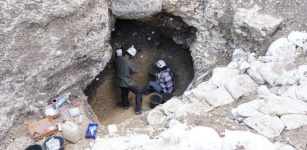 Entrance To An Unexplored Ice Age Cave Discovered Near Engen!
Archaeology | Aug 4, 2023
Entrance To An Unexplored Ice Age Cave Discovered Near Engen!
Archaeology | Aug 4, 2023 -
 Magical Dinas Emrys: Legendary Battle Of The Dragons And Merlin’s Hidden Treasure
Featured Stories | Jan 15, 2025
Magical Dinas Emrys: Legendary Battle Of The Dragons And Merlin’s Hidden Treasure
Featured Stories | Jan 15, 2025 -
 Grandfather Frost And Snow Maiden Bring Gifts On New Year’s Eve
Christmas Traditions | Dec 31, 2024
Grandfather Frost And Snow Maiden Bring Gifts On New Year’s Eve
Christmas Traditions | Dec 31, 2024 -
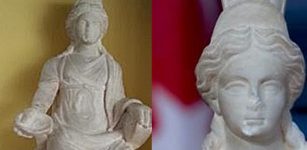 Statue Of Goddess Cybele Looted In The 1960s Returned To Turkey
Artifacts | Dec 22, 2020
Statue Of Goddess Cybele Looted In The 1960s Returned To Turkey
Artifacts | Dec 22, 2020 -
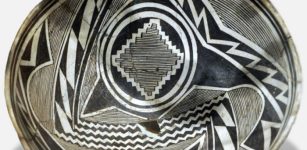 Expressive Beautiful And Celebrated Bowls Created By Mimbres Artisans From Distant Past
Artifacts | Oct 9, 2023
Expressive Beautiful And Celebrated Bowls Created By Mimbres Artisans From Distant Past
Artifacts | Oct 9, 2023 -
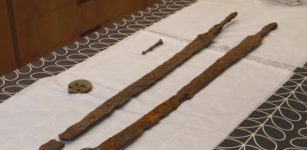 Unique Ancient Roman Cavalry Swords Found In Cotswolds, UK
Archaeology | Sep 18, 2023
Unique Ancient Roman Cavalry Swords Found In Cotswolds, UK
Archaeology | Sep 18, 2023 -
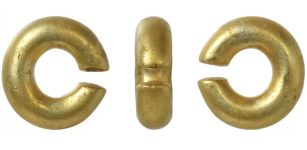 ‘Incredibly Mysterious’ Bronze Age Gold Penannular Ring Found In Norfolk
Archaeology | Apr 24, 2023
‘Incredibly Mysterious’ Bronze Age Gold Penannular Ring Found In Norfolk
Archaeology | Apr 24, 2023 -
 Mystery Of The Horrible ‘Thing’ Found In A Dominican Monastery
Featured Stories | Sep 4, 2023
Mystery Of The Horrible ‘Thing’ Found In A Dominican Monastery
Featured Stories | Sep 4, 2023 -
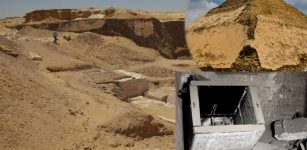 Mystery Of The Unbreached Burial Chamber Inside A Little-Known Pyramid In The Dashur Complex
Featured Stories | Mar 18, 2022
Mystery Of The Unbreached Burial Chamber Inside A Little-Known Pyramid In The Dashur Complex
Featured Stories | Mar 18, 2022 -
 Glastonbury Tor – One Of The Most Mysterious Sacred Places In England
Civilizations | Aug 30, 2018
Glastonbury Tor – One Of The Most Mysterious Sacred Places In England
Civilizations | Aug 30, 2018 -
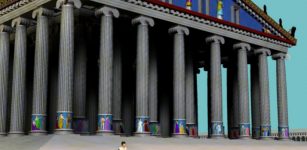 Herostratic Fame Relates To Herostratus Who Burned The Beautiful Temple Of Artemis To Become Famous
Ancient History Facts | Jan 6, 2017
Herostratic Fame Relates To Herostratus Who Burned The Beautiful Temple Of Artemis To Become Famous
Ancient History Facts | Jan 6, 2017 -
 Rare Bulla (Seal) And 2,600-Year-Old Stamp With Biblical Name Unearthed In City Of David
Archaeology | Apr 3, 2019
Rare Bulla (Seal) And 2,600-Year-Old Stamp With Biblical Name Unearthed In City Of David
Archaeology | Apr 3, 2019 -
 Seven Fires Prophecy Of The Anishinaabe People And The Future Of The Turtle Island – Are Humans Standing At The Crossroads?
Myths & Legends | Feb 14, 2019
Seven Fires Prophecy Of The Anishinaabe People And The Future Of The Turtle Island – Are Humans Standing At The Crossroads?
Myths & Legends | Feb 14, 2019 -
 What Can Grinding Stones Reveal About Europe’s Earliest Neolithic Communities?
Archaeology | Feb 28, 2025
What Can Grinding Stones Reveal About Europe’s Earliest Neolithic Communities?
Archaeology | Feb 28, 2025 -
 What Can Medieval Skeletons Tell Us About Modern Day Pandemics
Archaeology | Feb 25, 2022
What Can Medieval Skeletons Tell Us About Modern Day Pandemics
Archaeology | Feb 25, 2022 -
 Legendary Saraswati River Is Not A Legend – It Existed 4,000 Years Ago
Archaeology | Mar 18, 2017
Legendary Saraswati River Is Not A Legend – It Existed 4,000 Years Ago
Archaeology | Mar 18, 2017 -
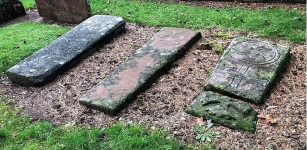 Forgotten Graves Of The Knights Templar In Staffordshire Discovered By A Historian?
Archaeology | Aug 19, 2023
Forgotten Graves Of The Knights Templar In Staffordshire Discovered By A Historian?
Archaeology | Aug 19, 2023 -
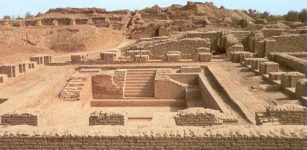 How Did Indus Civilization Manage To Resist Climate Change?
Archaeology | Feb 22, 2017
How Did Indus Civilization Manage To Resist Climate Change?
Archaeology | Feb 22, 2017



